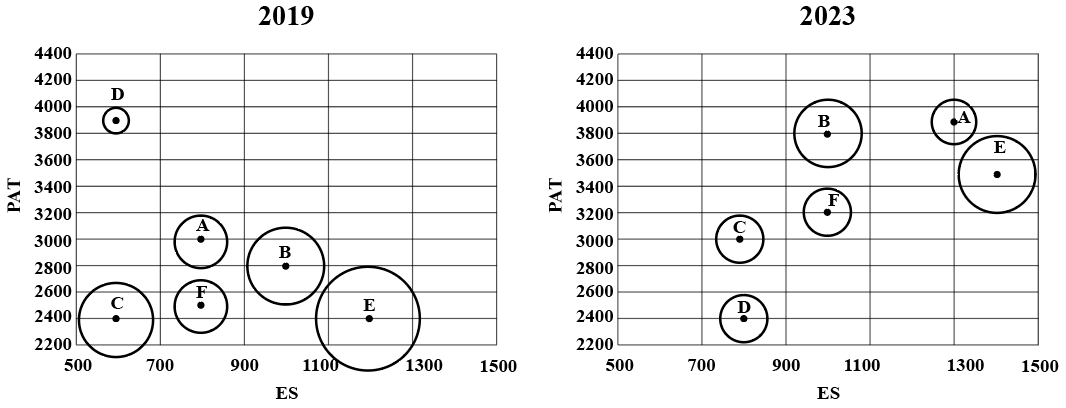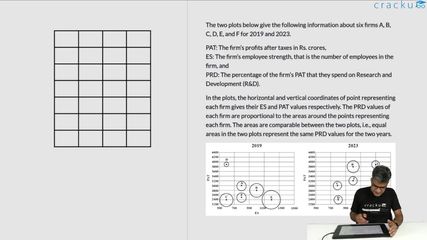Sign in
Please select an account to continue using cracku.in
↓ →
The two plots below give the following information about six firms A, B, C, D, E, and F for 2019 and 2023.
PAT: The firm’s profits after taxes in Rs. crores,
ES: The firm’s employee strength, that is the number of employees in the firm, and
PRD: The percentage of the firm’s PAT that they spend on Research and Development (R&D).
In the plots, the horizontal and vertical coordinates of point representing each firm gives their ES and PAT values respectively. The PRD values of each firm are proportional to the areas around the points representing each firm. The areas are comparable between the two plots, i.e., equal areas in the two plots represent the same PRD values for the two years.

Which among the firms C, D, E, and F had the least amount of R&D spending per employee in 2023?
We calculated the PAT per employee for F, C and E in the last question, using that information and calculating the PAT per employee for firm D to be $$\frac{2400}{800}=3$$
For firms F, C and D, we can see that the area is the same hence the only factor to consider is PAT per employee
F is 3.2, C is 3.75, and D is 3
This leaves D as the minimum.
Comparing E and D (taking the proportionality constant as k)
E has PAT per employee as 2.5 with a radius of 1.5 units, the PRD value per employee would be $$\frac{5}{2}k\pi\ \left(\frac{3}{2}\right)^2=k\pi\ \times\ \frac{5\times\ 9}{8}$$
D has PAT per employee as 3, with a radius of 1 unit.the PRD value per employee would be $$3k\pi\ \left(1\right)^2=3k\pi\ $$
We can see that the value would be greater for E, therefore firm D will have the lowest R&D spending per employee in 2023
Therefore, Option B is the correct answer.

Click on the Email ☝️ to Watch the Video Solution
Create a FREE account and get:
Educational materials for CAT preparation